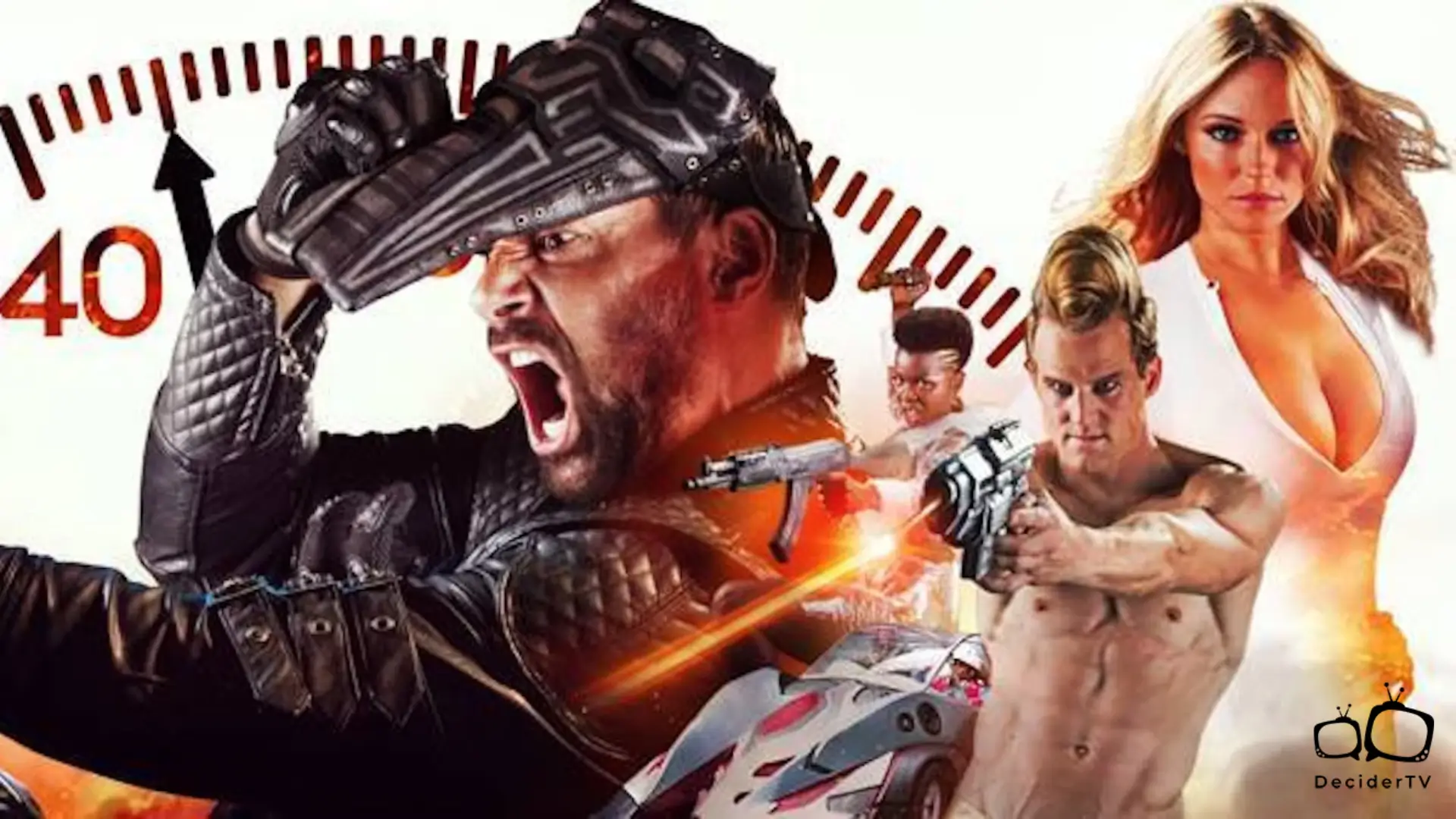“Death Race 2050,” a movie directed by G.J. Echternkamp, takes viewers on a thrilling ride through a dystopian future where drivers compete in a lethal race for points. This 2017 film serves as a sequel to the 1975 classic “Death Race 2000,” continuing the legacy with a mix of action and political satire. Starring Manu Bennett, Marci Miller, and Malcolm McDowell, the film combines high-speed chases with dark humor.
The film was produced by Roger Corman, who is known for creating cult classics. Corman described “Death Race 2050” as “a car-racing picture with some black humor,” and it certainly delivers on that promise. The race itself is set in a terrifying future where earning points often involves causing chaos and destruction.
For fans of the original, “Death Race 2050” offers a nostalgic yet fresh take on the deadly sport. Despite receiving mixed reviews for its campy style and over-the-top antics, it remains a significant entry in the genre. If you enjoy action-packed films with a satirical edge, Death Race 2050 is worth watching.
Conceptualization of Death Race 2050
“Death Race 2050” builds on its predecessor, focusing on political satire and action. The film highlights a dystopian future with a deadly race reflecting societal issues.
Historical Context
The original “Death Race 2000” released in 1975 set the stage for “Death Race 2050”. Known for its dark humor and social commentary, the film depicted a brutal cross-country car race where drivers scored points by running over pedestrians. These elements are carried into “Death Race 2050”, blending action with satire to critique modern society.
Roger Corman, who produced both films, aimed to capture the chaotic energy of the original. He described the 2017 sequel as a blend of humor and action, retaining the core elements that made the original a cult classic. The intent was to rejuvenate the story for a modern audience, while preserving its distinct tone.
IMDb Rating 3.7/10
Influence on Popular Culture
“Death Race 2050” has influenced various aspects of pop culture, much like its predecessor. The movie’s mix of exaggerated violence and satire has impacted films and video games. Titles like “Twisted Metal” and “Carmageddon” reflect similar themes of chaotic car combat.
The film’s outlandish characters and over-the-top scenarios continue to resonate in niche audiences. It also serves as a critique of reality television and political systems, reflecting real-world frustrations through a heightened dystopian lens. This cultural impact highlights the enduring relevance of Corman’s vision in contemporary media.
Execution and Realization
The creation and impact of “Death Race 2050” blend modern filmmaking techniques, economic factors, and ethical debates.
Technological Advancements
“Death Race 2050” utilized new technologies to enhance its visual appeal and storytelling. The film employed advanced CGI to create the high-octane racing scenes, enhancing the sense of danger and excitement. Drones and compact cameras captured dynamic angles and stunts that traditional methods could not.
Moreover, practical effects played a significant role. Real vehicles and explosive setups provided authenticity often missing in heavily CGI-reliant films. Furthermore, these practical effects were complemented by digital enhancements for a seamless visual experience.
High-definition filming techniques ensured crisp and clear visuals. The team used advanced editing software to combine practical and digital elements smoothly.
Economic Impacts
Producing “Death Race 2050” influenced the economy in several ways. The film created numerous jobs, from actors and directors to behind-the-scenes staff like editors, set designers, and special effects crews. Its production stimulated local economies, as filming often took place in cities requiring accommodations, catering, and other services.
Distribution of the film also generated income. Direct-to-video releases, streaming services, and DVD sales provided revenue streams that supported the industry. Marketing campaigns boosted local businesses by using local talent and services.
In addition to direct impacts, the film’s cultural relevance helped maintain and boost the action genre market. This ongoing interest supports continuous investments, ensuring job creation and economic throughput.
Ethical Considerations
“Death Race 2050” presents numerous ethical questions due to its portrayal of violence and dystopian themes. The film’s concept of scoring points by killing pedestrians and competitors raises concerns about desensitization to violence. While fictional, the portrayal may influence perceptions of real-life violence.
Creators faced decisions about the balance between entertainment and potential negative impacts. These decisions involved considering the social ramifications of depicting morally questionable acts.
Additionally, the film’s satirical approach aimed to critique societal issues, such as corporate control and dehumanization. This commentary forces viewers to reflect on real-world parallels, making ethical evaluations a key aspect of its narrative.
Frequently Asked Questions
Who stars in the cast of ‘Death Race 2050’?
The cast includes Manu Bennett as Frankenstein, Marci Miller as Annie Sullivan, and Malcolm McDowell as the Chairman. These actors bring the dystopian world of “Death Race 2050” to life.
Is ‘Death Race 2050’ available for streaming on Netflix?
As of the latest check, “Death Race 2050” is not available on Netflix. However, it may be available on other streaming platforms or for purchase and rental through various online services.
How does ‘Death Race 2050’ relate to the earlier ‘Death Race’ films?
“Death Race 2050” is a direct sequel to the original 1975 movie, “Death Race 2000”. Both films were produced by Roger Corman and share similar themes and satirical tones, focusing on a dystopian future with deadly car races.
What are the reviews and ratings of ‘Death Race 2050’ on IMDb?
“Death Race 2050” has received mixed reviews. Some praise it for its satirical elements and nods to the original film, while others find it lacking in depth. You can check the latest reviews and ratings on IMDb.

